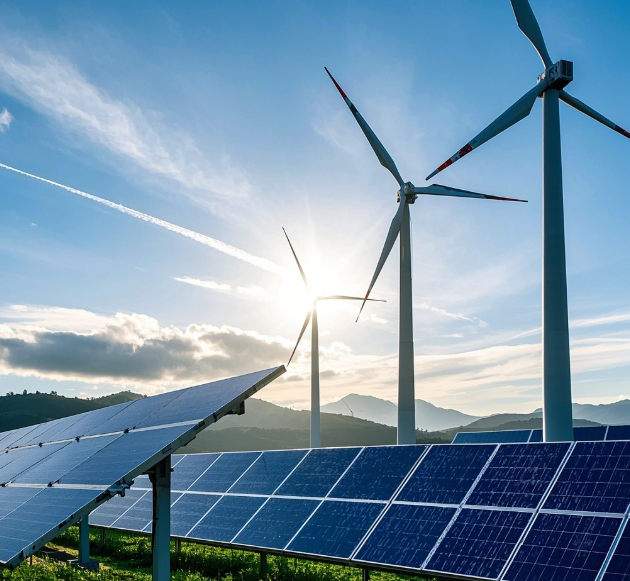According to a new report released by the International Renewable Energy Agency (IRENA), global renewable energy installations have managed to hit a record high in the past year. Up to 92.5% of the new electricity mix comes from clean and sustainable energy sources such as solar and wind.
The data accurately shows that nearly 64% of the new renewable energy capacity installed in 2024 will come from China. Globally, new renewable energy generation capacity reached an impressive 585 GW (585 billion watts), an increase of 15.1% compared to the previous year. This significant growth has brought the share of green non-nuclear power such as solar and wind power to 46% of the global electricity mix.
China is far ahead of Europe and the United States
China has shown a leading edge in the renewable energy sector. In 2024, China will add nearly 374 GW of renewable energy capacity, about three-quarters of which will come from solar. Not only has China excelled in terms of increment, but its total installed solar capacity is now approaching 887 GW, leaving many developed countries in Europe and the United States far behind. With a total solar capacity of only 176 GW in the US, 90 GW in Germany, 21 GW in France, and 17 GW in the UK, the gap with China is clear at a glance. This leading edge is not only reflected in the installed capacity figures, but also in China's well-established renewable energy industry chain. From upstream silicon production, to midstream solar panel manufacturing, to downstream PV power plant construction, operation and maintenance, China has the world's most complete and efficient industrial system, which can effectively control costs and improve product quality and performance. In terms of technological innovation, China's PV companies have continuously increased R&D investment, and have made a series of breakthroughs in key areas such as high-efficiency battery technology and energy storage technology, further consolidating their leading position in the global renewable energy field.

Figure: China's contribution to the world's installed renewable energy capacity has reached a new high
Despite the remarkable growth in global renewable energy installations, IRENA has also issued a warning. On current trends, global renewable energy capacity is still unlikely to triple between 2023 and 2030 and is expected to lag behind by 28%. This target was set in 2023 based on the urgent need to combat climate change and reduce dependence on fossil fuels such as coal, oil, and gas.
UN Secretary-General António Guterres said in a statement: "Renewables are replacing fossil fuels at an accelerated pace, creating jobs, reducing energy costs, and improving air quality. However, we must accelerate the energy transition and ensure equity. In the face of China's outstanding performance in the field of renewable energy, Simon Steele, the UN's climate chief, called on Europe and other developed countries to accelerate the development of renewable energy to close the gap with China. "The global trend of renewable energy growth is irreversible. "The green energy market will reach $2 trillion in 2024, and the potential for future growth remains huge.
Policy support is likely to further accelerate growth
Neil Grant, a senior policy analyst at climate policy analyst firm Climate Analytics, said the pace of renewables could be increased further: "What if Renewables will grow by 15% in 2024, and this growth will be even more impressive with the support of comprehensive and credible climate policies around the world. In fact, China's rapid development of renewable energy is largely due to its well-established and strong policy support system. Over the years, the Chinese government has introduced a series of policies to encourage the development of renewable energy, from subsidies to help companies reduce initial investment costs, to land policies to ensure land demand for renewable energy projects, to grid-connected policies to ensure that renewable electricity can be smoothly connected to the grid. The synergy of these policies provides a solid guarantee for the take-off of China's renewable energy industry, and also provides valuable policy experience for other countries around the world.






